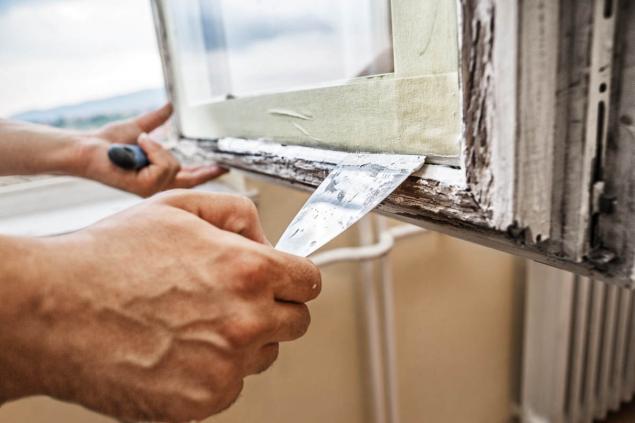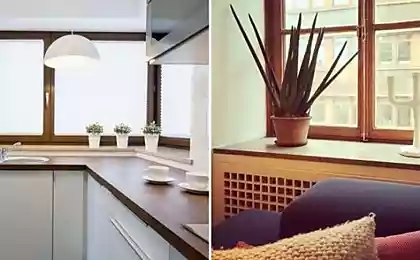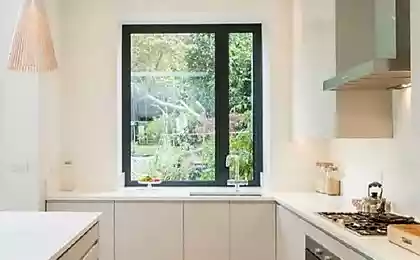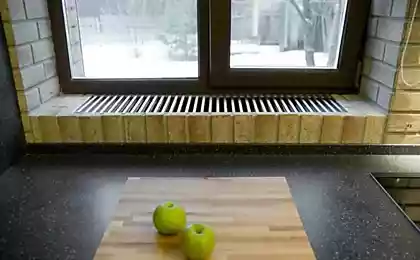170
Why do we still install metal tints on windows, although the Europeans have long abandoned them?
Installation of tides on windows is not necessary if it is a private house and windows are under the roof. The only but important function of external window sills is to divert water from walls and windows. It is inexpensive to establish ebb, but the noise of drumming rain at low tide is not pleasant for everyone.

Tide installation Usually ebbs are made of thin materials: steel, aluminum, copper or plastic. One side is fixed on the window profile and the other is hanging in the air. This causes ringing and rattling in the rain. And even expensive windows with good sound insulation do not block this noise.

Is there an alternative to drumming tides? Since the function of the tides is to protect the wall from getting wet, you can use other materials to finish the external window sill. For example, make a slope from the window and line it with tiles or stone. These materials will cost more, but there will be no irritating sound from raindrops on the metal. Unless, of course, you live in an apartment building where everyone has such ebbs.

Interestingly, in European countries, metal tides are not installed. To divert water from the walls, brick, ceramics or wood are used. In this case, it is necessary to periodically impregnate natural materials with a hydrophobic coating, otherwise a new tide will have to be made in a few years. This is one of the reasons why builders do not fool their heads and install metal tides: cheap and angry.

The option with tiles and stone is feasible both when installing new windows and in the presence of old ones. But if you do not want to play with such a seemingly small thing for a long time, you can magic over the metallic tide. In the construction stores sold something similar to isoline. It sticks to the metallic ebb with a hair dryer.

Another option is mounting foam. Attach the foam thin-walled profile to the ends of the wall. This way the tide will not hang, and you will get rid of the annoying noise. You can weigh the ebb itself with a special weighting tape from below. So the tide will not hang out and make extraneous sounds. Foil polyethylene has sound-absorbing properties. If you attach it to the back of the tide, the problem will be solved.

As you can see, there are many options for solving the problem. It is not that aluminum tides are bad, they can always be improved. The budget and the presence of a musical ear already matter. Some people even like the sound of rain. Are you worried about the rattling tides?

Tide installation Usually ebbs are made of thin materials: steel, aluminum, copper or plastic. One side is fixed on the window profile and the other is hanging in the air. This causes ringing and rattling in the rain. And even expensive windows with good sound insulation do not block this noise.

Is there an alternative to drumming tides? Since the function of the tides is to protect the wall from getting wet, you can use other materials to finish the external window sill. For example, make a slope from the window and line it with tiles or stone. These materials will cost more, but there will be no irritating sound from raindrops on the metal. Unless, of course, you live in an apartment building where everyone has such ebbs.

Interestingly, in European countries, metal tides are not installed. To divert water from the walls, brick, ceramics or wood are used. In this case, it is necessary to periodically impregnate natural materials with a hydrophobic coating, otherwise a new tide will have to be made in a few years. This is one of the reasons why builders do not fool their heads and install metal tides: cheap and angry.

The option with tiles and stone is feasible both when installing new windows and in the presence of old ones. But if you do not want to play with such a seemingly small thing for a long time, you can magic over the metallic tide. In the construction stores sold something similar to isoline. It sticks to the metallic ebb with a hair dryer.

Another option is mounting foam. Attach the foam thin-walled profile to the ends of the wall. This way the tide will not hang, and you will get rid of the annoying noise. You can weigh the ebb itself with a special weighting tape from below. So the tide will not hang out and make extraneous sounds. Foil polyethylene has sound-absorbing properties. If you attach it to the back of the tide, the problem will be solved.

As you can see, there are many options for solving the problem. It is not that aluminum tides are bad, they can always be improved. The budget and the presence of a musical ear already matter. Some people even like the sound of rain. Are you worried about the rattling tides?
Home spit from pumpkin, and pancakes adore, fry pancakes on boiling water in huge batches.
A wealthy brother did not give up his part of the apartment, he is rich, and the soul is poor.























